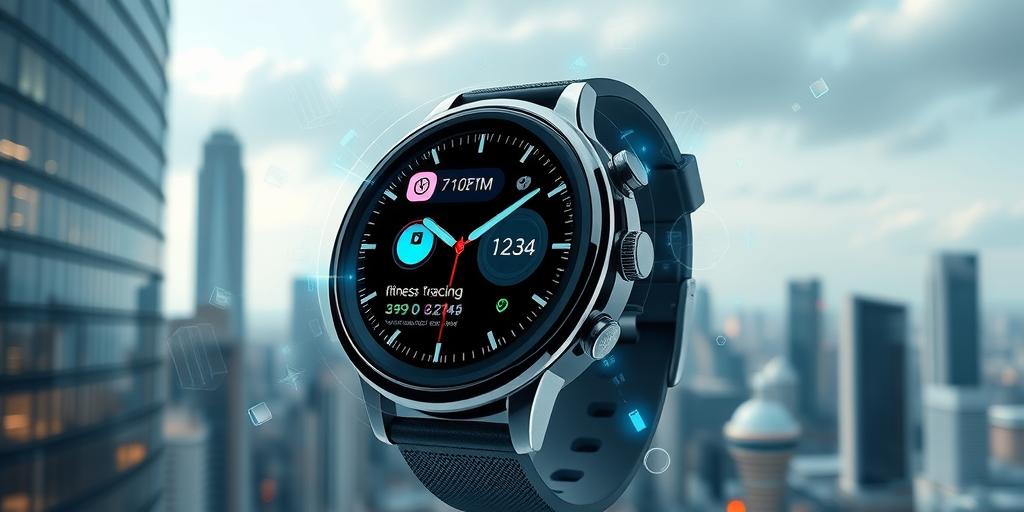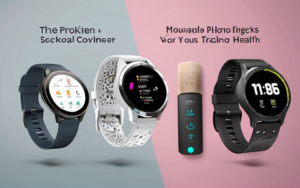Wearable technology has come a long way since the early days of bulky fitness trackers. Today, we’re surrounded by innovative devices that seamlessly integrate into our lives, offering a wide range of capabilities from tracking our health and fitness to controlling our smart homes. This blog post explores the latest advancements in wearable tech, highlighting the exciting innovations that are shaping the future of this rapidly evolving field.
The Evolution of Wearable Technology
From Fitness Trackers to Smartwatches
Remember the days when fitness trackers were the only wearable devices available? They were bulky, basic, and primarily focused on tracking steps and calories burned. But as technology evolved, so did the capabilities of wearable devices. Smartwatches emerged, offering a more comprehensive approach to fitness tracking, along with features like notifications, music playback, and even mobile payments.
The Rise of Augmented Reality and Virtual Reality
The integration of augmented reality (AR) and virtual reality (VR) into wearable technology has opened up a whole new world of possibilities. AR glasses, for example, can overlay digital information onto the real world, providing users with interactive experiences and enhanced navigation capabilities. VR headsets, on the other hand, immerse users in virtual environments, offering opportunities for gaming, training, and even therapy.
Health and Wellness Innovations
Advanced Health Monitoring
Wearable tech is playing an increasingly important role in preventive healthcare and personalized medicine.
Continuous Glucose Monitoring
For individuals with diabetes, continuous glucose monitoring (CGM) devices are a game-changer. These wearable sensors track blood sugar levels in real-time, providing valuable insights into glucose fluctuations and enabling timely interventions.
ECG and Blood Pressure Tracking
Smartwatches equipped with electrocardiogram (ECG) sensors can detect irregular heart rhythms, potentially alerting users to serious health issues. Wearable devices that measure blood pressure offer another layer of health monitoring, allowing individuals to track their blood pressure levels throughout the day and share the data with their healthcare providers.
Personalized Fitness Coaching
Beyond basic fitness tracking, wearables are now offering personalized fitness coaching. Smartwatches and fitness trackers can analyze your workout data, provide customized training plans, and even offer real-time feedback during workouts.
Mental Health Support
The impact of wearable technology extends to mental health as well. Some devices can track sleep patterns, heart rate variability, and even stress levels. This data can provide valuable insights into an individual’s mental well-being and support the development of personalized interventions for mental health conditions.
Smart Home Integration
Voice Control and Automation
Smartwatches and other wearable devices can seamlessly connect to smart home ecosystems, allowing users to control various aspects of their homes using voice commands. Imagine turning off the lights, adjusting the thermostat, or locking your doors with a simple voice command on your smartwatch.
Remote Monitoring and Security
Wearable technology can also play a role in home security. Some smartwatches and fitness trackers include fall detection features that can automatically contact emergency services in case of a fall. Other devices can be used to monitor home security systems remotely, providing peace of mind while you’re away.
Emerging Trends in Wearable Technology
Biometric Authentication
Biometric authentication is becoming increasingly prevalent in wearable tech. Smartwatches and other devices can use fingerprint scanning, facial recognition, or even iris scanning for secure access and payments.
Textile-Based Electronics
The development of flexible, textile-based electronics is paving the way for a new generation of wearable devices that are more comfortable and discreet. Imagine wearing a shirt that monitors your heart rate, tracks your sleep patterns, and even provides personalized fitness coaching.
Brain-Computer Interfaces
Brain-computer interfaces (BCIs) are one of the most exciting frontiers in wearable technology. These devices can detect and interpret brain signals, enabling users to control devices with their thoughts. BCIs have the potential to revolutionize healthcare, gaming, and even communication.
The Future of Wearable Technology
Increased Personalization and Customization
As wearable technology advances, we can expect to see a greater emphasis on personalization and customization. Devices will be designed to cater to individual needs and preferences, offering a tailored experience for each user.
Integration with Artificial Intelligence
Artificial intelligence (AI) is playing an increasingly important role in wearable tech. AI algorithms can analyze data from wearable devices, providing users with personalized insights and recommendations. AI can also power features like voice assistants, predictive analytics, and automated health interventions.
Ethical Considerations and Privacy Concerns
As wearable technology becomes more powerful and integrated into our lives, it’s essential to address ethical considerations and privacy concerns. Data security, informed consent, and the potential for misuse of personal data are crucial issues that need to be addressed as this field continues to evolve.
The future of wearable technology is full of exciting possibilities. From advanced health monitoring to seamless smart home integration, these devices are transforming the way we live, work, and interact with the world around us. As technology continues to evolve, we can expect to see even more innovative and transformative applications of wearable tech in the years to come.




